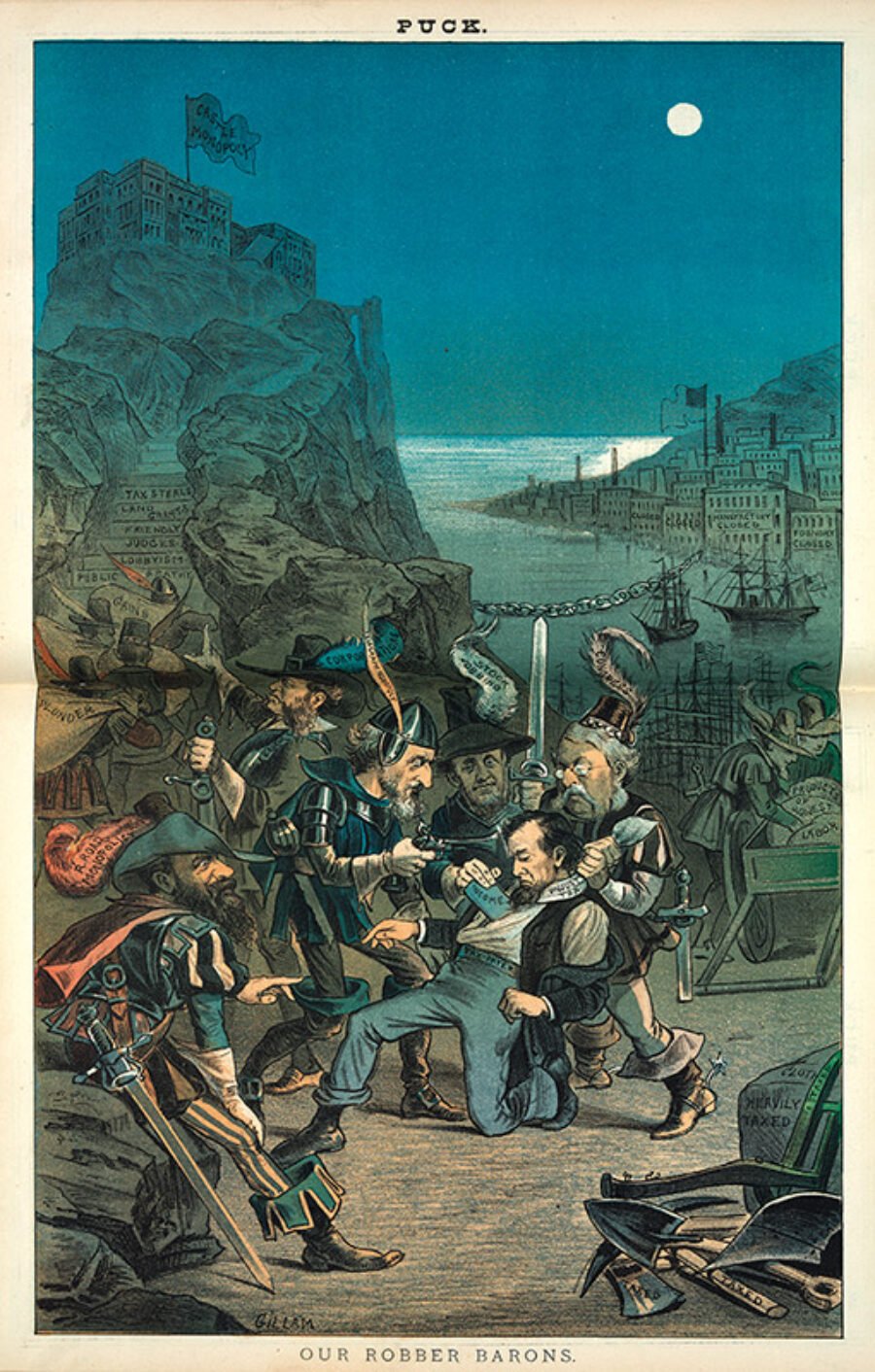
Our Robber Barons, by Bernhard Gillam, from the June 14, 1882, issue of Puck, with Jay Gould as r. road monopolist, William H. Vanderbilt as corporations, Cyrus W. Field as telegraph monopoly, Russell Sage as stock jobbing, and George M. Robeson as congress robbing a tax payer of his income. Courtesy Prints and Photographs Division, Library of Congress, Washington
Just a few short years ago we Americans knew what we were doing: making the world into one big likeness of ourselves. We had the experts; we knew how it was done. Our policy operatives would deradicalize here and regime-change there; our economists would float billions to the good guys and slap sanctions on the bad; and pretty soon the whole place was going to be stately and neat, safe for debt instruments and empowerment seminars, for hors d’oeuvres in the embassy garden and taxis hailed with smartphones. Democracy! Of thee we sang.
Now we stand chastened, humiliated, bewildered.…






































































































